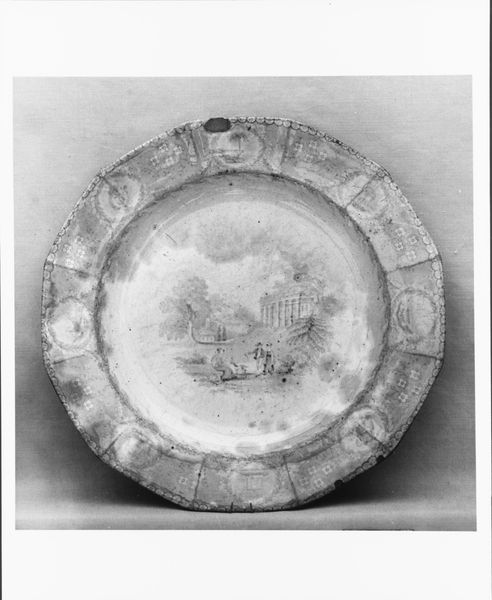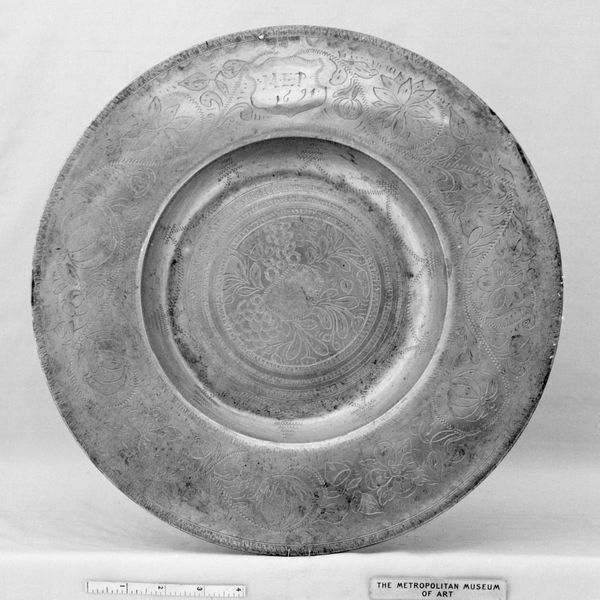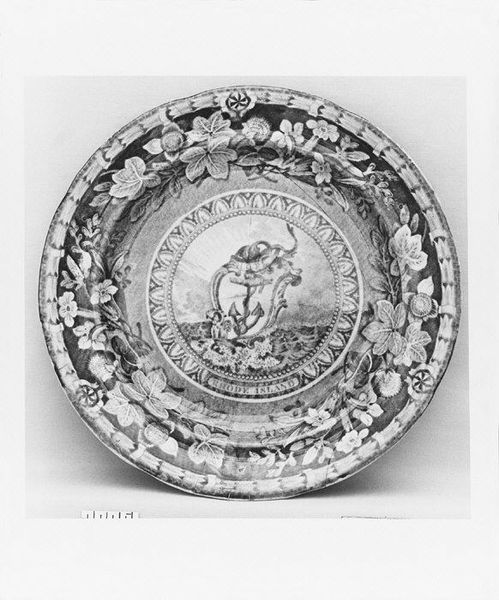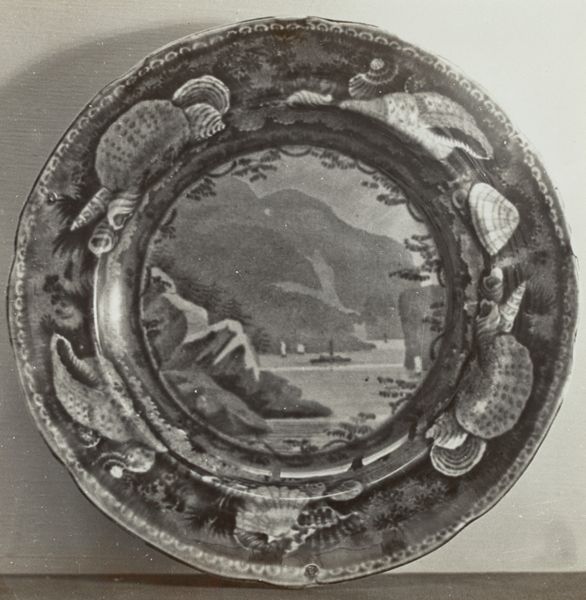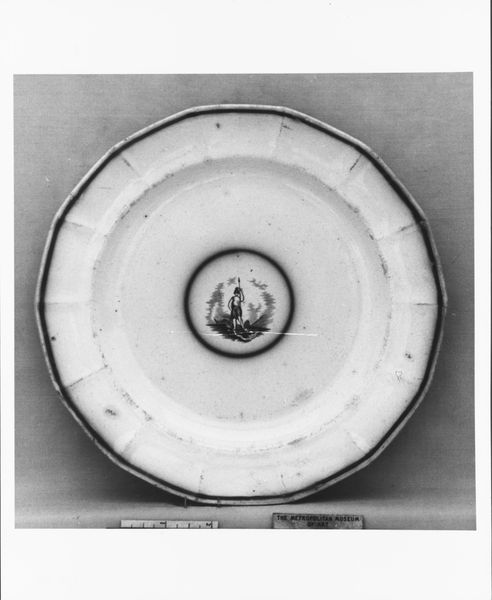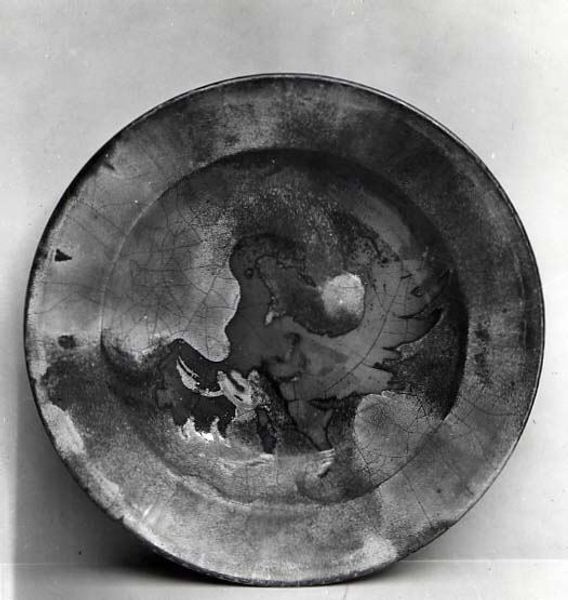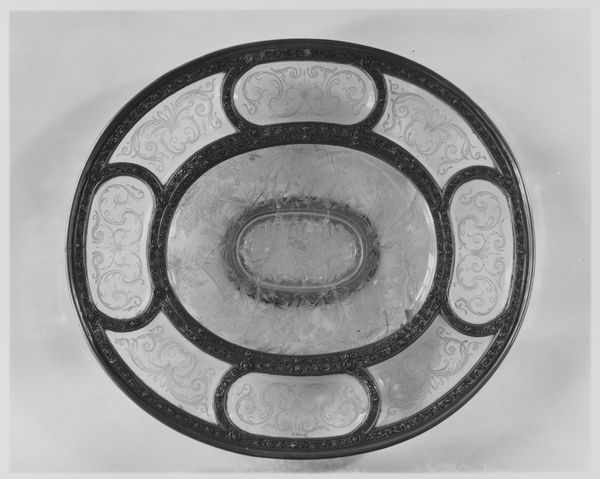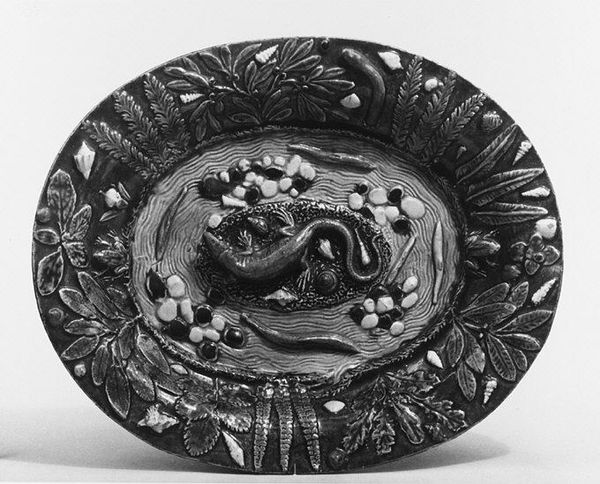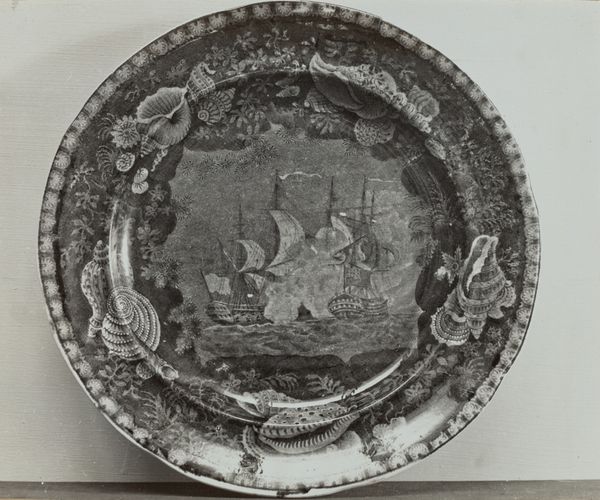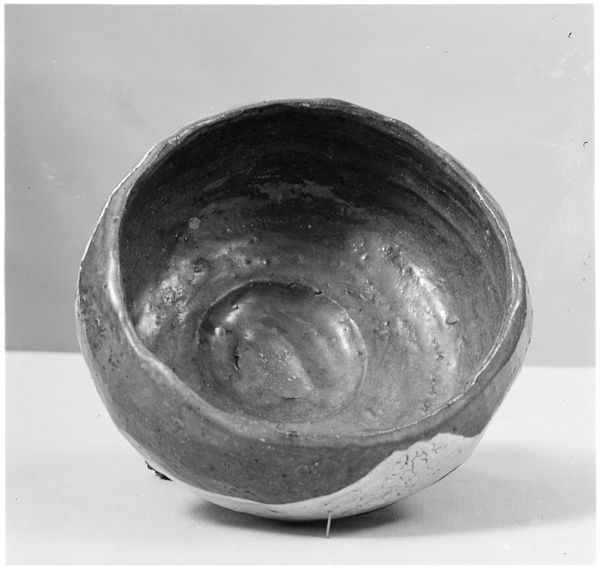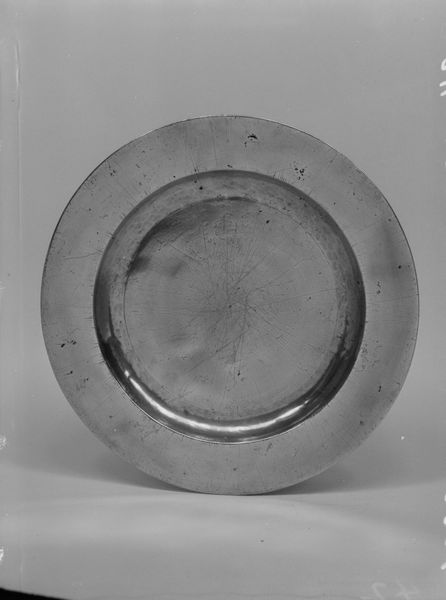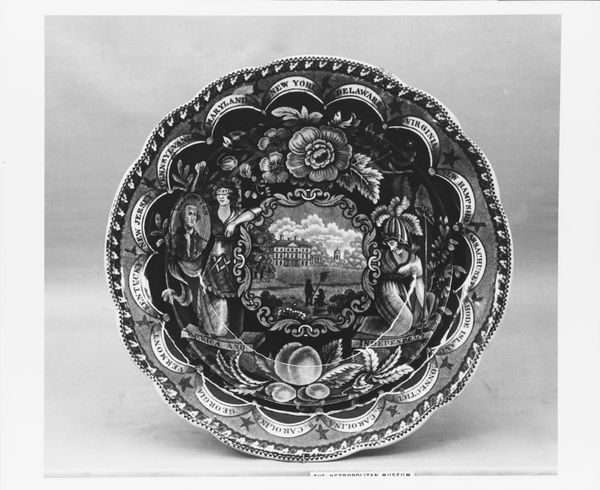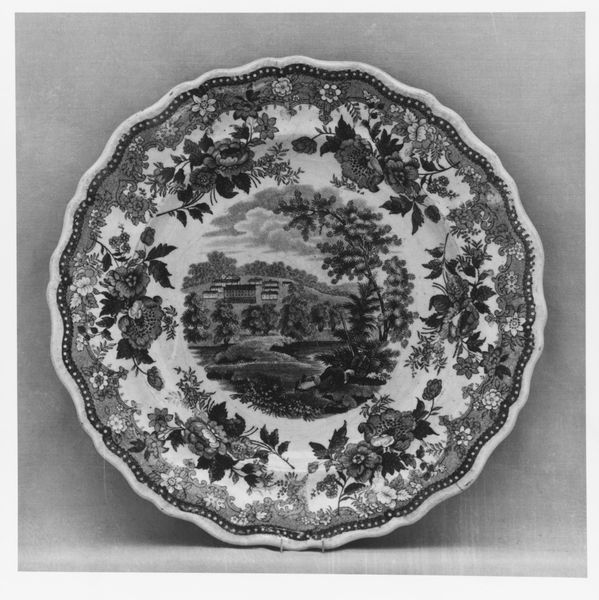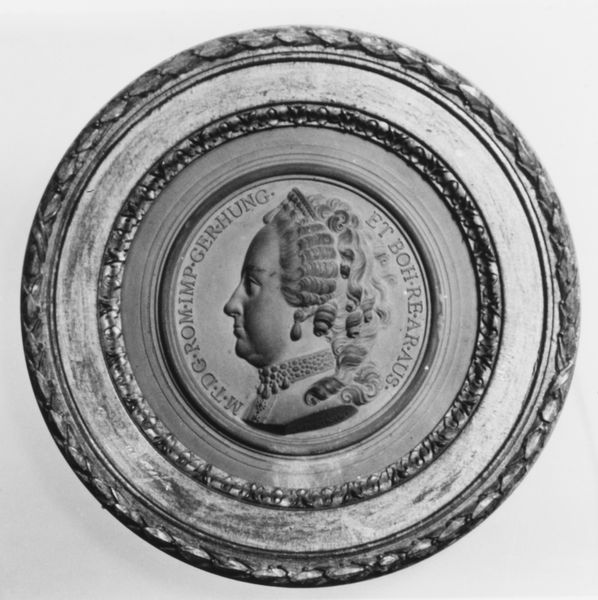
ceramic
#
ceramic
#
orientalism
#
decorative-art
Dimensions: Diam. 7 3/4 in. (19.7 cm)
Copyright: Public Domain
Curator: What a piece! Here we have a ceramic plate made by Davenport, sometime between 1817 and 1860. It's part of the decorative arts collection here at the Met. It strikes me as very much influenced by what we call "orientalism." Editor: Orientalism, you say? My first thought goes more toward grandma's fine china. There’s something comforting, even nostalgic about that central image on the plate—figures gathered 'round. But surrounded by those swirling patterns—oh yes, the overall feel, it does evoke a kind of fascination with the exotic, I see. Curator: It’s fascinating how design trends reflect societal interests. Orientalism, as a style, drew heavily from the artistic traditions of East Asia. The use of intricate, almost overwhelming floral and vine patterns is one element of that trend. Beyond decoration, "orientalism" as an artistic tendency carries considerable baggage, considering it often perpetuated very specific, frequently skewed views of other cultures. Editor: A decorative Rorschach test, then! The darker tones, the densely packed motifs... they almost speak to a desire to contain or even dominate this idealized 'other.' But you know, stepping back, it’s also visually stunning, wouldn’t you say? How the central scene acts almost like a vignette viewed through a portal or looking glass! Curator: It's a layered and complex response, for sure. The function of decorative objects like these extends beyond mere aesthetics. They're also products of specific historical and cultural moments, carrying ideologies about intercultural interactions and exerting a kind of social capital on display. This "Plate", produced by Davenport, signifies its maker’s capacity to produce objects for an elite consumer audience that was engaged with fashionable styles of art and design. Editor: And I think we're both touching on the key—art made and used as social stagecraft! Whether we intend them to or not, objects like this communicate so much about power and who's in it. Looking closer now, what do you see in terms of technical achievements? The painting looks remarkably fine, I'd even say photographic if it weren't from so long ago. Curator: Absolutely. Transfer printing, developed in the late 18th century, made ceramic designs like this far easier to produce while achieving such fidelity, allowing for widespread distribution and consumption of artworks like these. The scale, the technique, the motifs; they’re all part of a complex conversation. Editor: A conversation we are still a part of! So, in a way, we’re contributing a footnote now to this object's ever-evolving narrative. Curator: Precisely. Art serves as a reflection and active element of the human experience. The conversation, indeed, never stops.
Comments
No comments
Be the first to comment and join the conversation on the ultimate creative platform.
